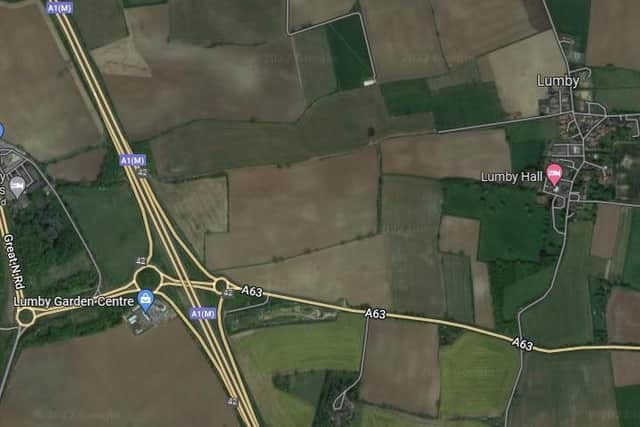Pleas to halt plans to transform 44 acres of farmland into a quarry
Hillam Parish Council has highlighted concerns over “significant increases in industrial operations” in the Selby District area after Stone Cliff Aggregates lodged plans to develop the site, which is close to the village of Lumby, the A1 and the A63, with North Yorkshire County Council.
The objections follow five parish councils launching a scathing attack over the county council’s 20-year record of allowing quarrying and waste processing on the relatively small area of the county that is designated Green Belt land, alleging the authority had worked behind the scenes with developers to get their plans approved.
Advertisement
Hide AdAdvertisement
Hide AdThey also accused the Tory-run authority of flying in the face of Government policies, approving major developments on agricultural land despite a litany of significant environmental concerns and strong opposition from local residents.


However, the proposals have been lodged following a shift in the county council’s political membership and in July, the authority agreeing to declare a climate emergency.
The Huddersfield-based aggregates firm has also applied to import inert waste to the site, which is 300 metres from Lumby, create a low-level aggregate processing plant with buildings and eventually restore the quarry to farmland.
The papers state the mineral will be worked “by ripping rather than blasting to reduce vibration and air over-pressure concerns” in a west to easterly direction so as to screen the workings from the village.
Advertisement
Hide AdAdvertisement
Hide AdThe documents add: “The proposed quarry will result in the loss of arable land, which is considered to be of low ecological value. Impacts on habitats and species are likely to be temporary due to the retention and reinstatement of habitats post-works.
“Due to the timescale of the project (19 years), these will be long-term temporary impacts.”
Nevertheless, in response to the proposals Yorkshire Wildlife Trusts has highlighted the proposed quarry is within 2.5km of its Ledsham Banks, Madbanks and Sherburn le Willows reserves and that a developers’ study shows an overall biodiversity net loss of 34 per cent.
The trust has called on the authority to ensure a greater proportion of the site is restored as conservation habitat site as it “could be very valuable in joining up habitats, enhancing a regionally important habitat corridor”.
Advertisement
Hide AdAdvertisement
Hide AdHowever, a Hillam Parish Council has emphasised concerns that urban developments have not been resisted on designated Green Belt land east of Leeds.
A parish spokesman wrote the proposed operations and buildings would not be in keeping the openness of the Green Belt and would inevitably have a negative effect on Lumby, Hillam and Monk Fryston.
He stated: ” There has been significant increases in industrial operations taking place in the area recently. There must be a point where it becomes over-industrialisation in the Green Belt.
“The detrimental impact the development would have on the Landscape would far outweigh the benefits. The works could have significant effects on the various Sites of Special Scientific Interest.”